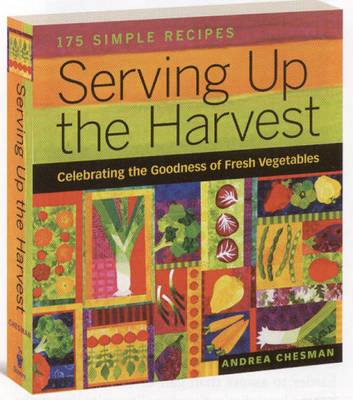Publisher: Artisan Publishing (2011)
At group events, and especially at holiday time, it’s becoming increasingly inevitable that at least one member of the party will have some form of food allergy, intolerance or special dietary need. Whether you are the afflicted person or the understanding host, it can be a stressful time orchestrating who can (or will) eat what, if “safe zones” of contaminant-free eats are required, and what both parties can do to ensure that the night goes off without a hitch. From my own personal experience, the extent and severity of an allergy situation can lead to a life of mono-dieting and even resentment from others over meals that are not “normal” under conventional norms. Barbara Kafka, author of several cookbooks including the best-selling Vegetable Love, addresses two of the most common dietary restrictions – gluten and lactose – in her latest work The Intolerant Gourmet: Glorious Food without Gluten and Lactose.

The 230 page book is filled with 300 recipes which the front cover proudly declares are “for every day and every need”. This claim is partially true – many of the time-blessed, omnivorous foodies living in well stocked city centres will find most of these meals no issue to create. However, if you eschew meat and seafood, or live in an area where the local grocery does not carry items like sorrel, samphire, and chervil, or come home at 7:30PM on a weeknight to a hungry family and whatever’s in the fridge, Intolerant Gourmet is simply too gourmet for frequent use. While I’m sure the author means well in her quest to write this recipe-packed book, I think it may fall into disuse by many home cooks who are turned off by the gratuitous inclusion of offal, game birds, pork rind and caviar.
It is clear that Kafka is nowhere close to writing vegetarian-friendly dishes as a constant, either. Every soup or other dish calling for broth or stock utilizes chicken broth, which granted is easily substituted but still a disappointment when looking for an inherently vegetarian option. A whole appetizer section is dedicated to pâté. Of the main courses (including salads), only eight are meatless, and only five of those are vegan. Sweets and baked goods are not even worth mentioning with regards to this work, which is a shame since many gluten and lactose free individuals find these items the hardest to replace.
There are, however, a few gems in Intolerant Gourmet. Quinoa-Crusted Chicken (p. 87) is ingenious and works equally well on extra-firm tofu slabs. Magical Green Tomatoes (p. 156) are no lie in their name – though the amount of oil called for is far too much (Kafka has written ½ cup, while I found a tablespoon or less to suffice). Zesty Rice Paper Chips (p. 24) and Hummus (p. 28), though almost too basic to put in any cookbook, were still well-received offerings at a recent dinner party. If I was a meat eater, I would agree with my mother that the Roast Chicken with Garlic Sauce (p. 87) would tempt my tastebuds as well.
The Intolerant Gourmet also finds strength in Kafka’s extensive research sections. Detailing everything from “Perfectly Poached Eggs” (p. 19) to a full-page chart of the best gluten-free pasta varieties (p. 39), the book also includes an entire chapter on starches and beans, featuring charts for the proper cooking of grains (p. 222) and using flours (p. 223) as well as a glossary of the varieties Kafka features in her recipes. These informative sections are worthy of their own, separate book, as they are truly things that the everyday, all-occasion cook can use regardless of dietary preferences, allergies or other restrictions.
Available on Amazon

















